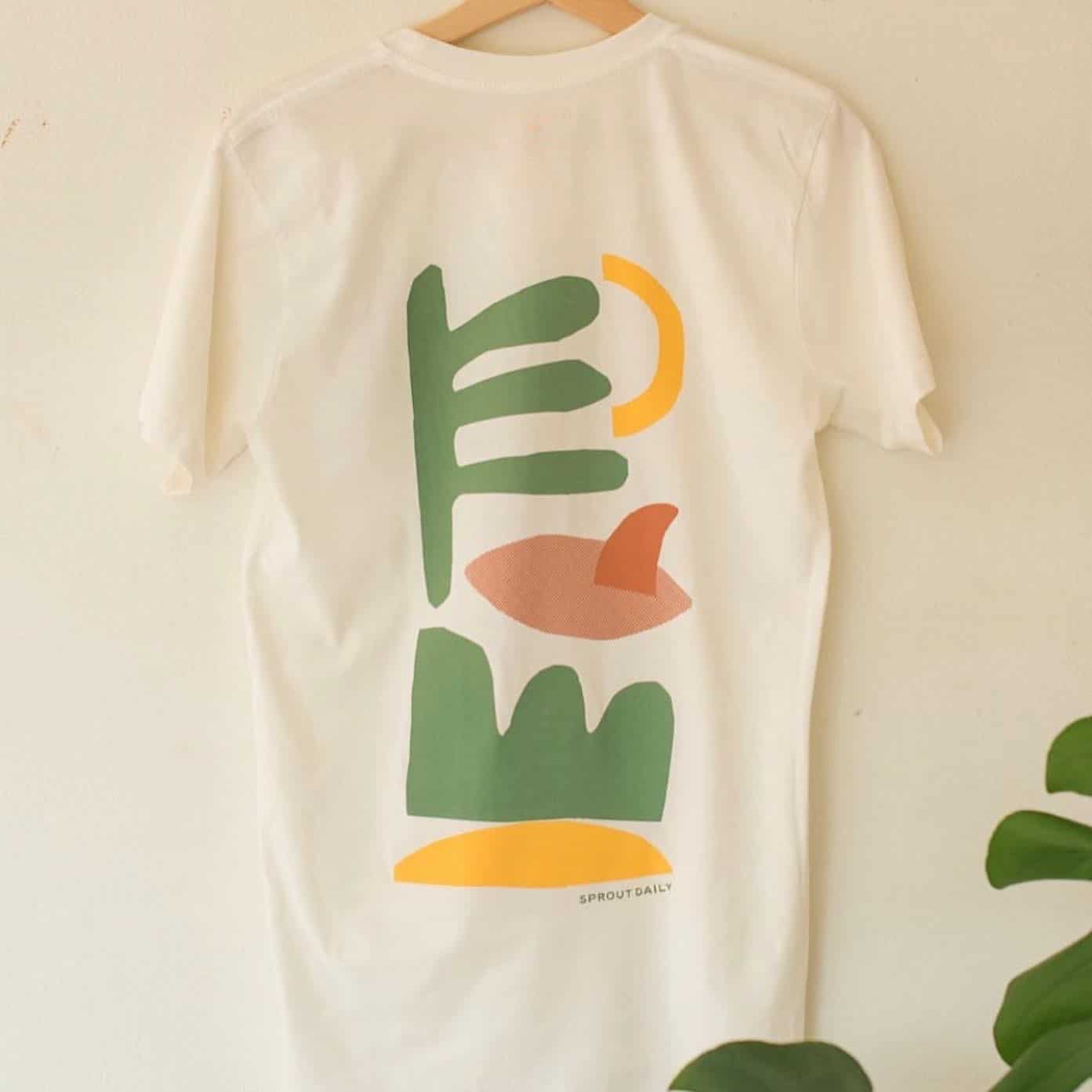Want to create your own custom t-shirts with bold, lasting designs? Learning how to print silkscreen t-shirts gives you the power to bring your ideas to life in a fun and affordable way.
Whether you’re starting a small business, making gifts, or just want to wear something unique, this method offers vibrant colors and professional results. In this guide, you’ll discover simple steps and insider tips that make the process easy—even if you’ve never done it before.
Ready to turn your creativity into wearable art? Let’s dive in and unlock your silkscreen printing potential!

Credit: digthiswayrecords.bandcamp.com
Choosing The Right Materials
Choosing the right materials is key for good silkscreen T-shirt printing. The fabric, ink, and screen all affect the final look and feel. Picking the best supplies helps your design last long and look bright.
Selecting T Shirt Fabric
Choose soft, smooth fabric for the best print results. Cotton is a popular choice because it holds ink well. Blends of cotton and polyester also work but may change how the ink sticks. Avoid thick or rough fabrics that can make printing uneven.
Picking The Ink Type
Use ink made for fabric printing. Water-based ink feels soft and is good for light colors. Plastisol ink sits on top of the fabric and is bright and durable. Make sure the ink matches your fabric type and design needs.
Preparing The Screen
Use a clean screen with a tight mesh for sharp designs. Coat the screen evenly with emulsion and let it dry in a dark place. Expose the screen to light with your design stencil to create the stencil. Rinse gently to reveal your design for printing.

Credit: permaset.com.au
Setting Up Your Workspace
Setting up your workspace is the first step to successful silkscreen printing. A well-organized area helps you work faster and with fewer mistakes. It also keeps your materials safe and clean. Preparing your space carefully makes the printing process smooth and enjoyable.
Organizing Tools And Supplies
Gather all your tools before starting. Place screens, squeegees, inks, and shirts within easy reach. Use shelves or bins to keep small items like tape and gloves tidy. Label containers to find items quickly. Keep your workspace clutter-free to focus on printing.
Creating A Clean Environment
Clean your workspace thoroughly. Remove dust, dirt, and old ink stains. Cover tables with plastic or paper to protect surfaces. Good lighting helps you see details clearly. Make sure the area is well-ventilated to avoid inhaling ink fumes. Cleanliness prevents mistakes and keeps prints sharp.
Design Preparation
Design preparation is a key step in silkscreen T-shirt printing. It shapes how your final print looks. Clear and simple designs work best. This phase includes creating or choosing artwork and moving that design onto a screen. Each step needs care and focus to get good results.
Creating Or Selecting Artwork
Start with a design that fits your idea. Use simple shapes and few colors. Complex images can be hard to print well. Choose high-contrast designs for better clarity. Digital files like PNG or vector images work best. If you draw by hand, scan your work clearly. Keep your design size suitable for the T-shirt area.
Transferring Design To Screen
Next, put your design onto a silkscreen mesh. Use a transparent film to print the design in black. Place the film on the screen coated with photo emulsion. Expose it to light to harden the emulsion except where the design blocks it. Wash the screen to reveal the design stencil. This screen will let ink pass only where the design is.
Printing Process
The printing process is the heart of silkscreen t-shirt making. It shapes the design and brings it to life on fabric. Each step must be done carefully to get clear, lasting prints. Understanding these steps helps you create better t-shirts.
Applying Ink To The Screen
Start by placing the screen on a flat surface. Pour a small amount of ink at the top of the screen. Spread the ink evenly across the design area. The ink should cover all parts of the stencil. Avoid using too much ink to prevent smudges.
Using The Squeegee Correctly
Hold the squeegee firmly at a 45-degree angle. Pull it down slowly and evenly over the screen. Use steady pressure to push the ink through the mesh. Repeat the stroke one or two times for full coverage. Clean the squeegee after each use to keep prints sharp.
Drying And Curing The Print
Dry the printed shirt in a warm, ventilated area. Avoid stacking shirts before they dry completely. Use a heat press or conveyor dryer to cure the print. Curing sets the ink and makes it last longer. Proper drying and curing prevent cracks and fading.
Troubleshooting Common Issues
Printing silkscreen T-shirts can sometimes lead to common problems. These issues affect the quality of your final product. Fixing them quickly helps save time and material. Understanding how to handle these problems improves your printing results.
Fixing Ink Smudges
Ink smudges happen when the ink does not dry fast enough. Avoid touching the print immediately after pressing. Use faster-drying inks for quicker results. Check the drying temperature and time settings on your dryer. Clean the screen to prevent extra ink from spreading.
Dealing With Uneven Prints
Uneven prints show areas with too much or too little ink. Make sure the screen is tight and flat on the frame. Apply even pressure when pulling the squeegee across the screen. Use a smooth and steady motion for consistent ink spread. Adjust the screen mesh count for better ink control.
Maintaining Screen Quality
Screen quality affects every print. Clean screens thoroughly after each use to avoid ink build-up. Store screens in a dry, dust-free area. Repair any tears or holes in the mesh immediately. Use proper emulsion and follow the curing instructions carefully.
Tips For Professional Results
Getting professional results in silkscreen T-shirt printing takes care and skill. Small details make a big difference. Focus on colors, layers, and screen care to improve your prints. These tips help your designs look sharp and last longer.
Choosing The Right Colors
Select colors that match your design and fabric well. Bright colors stand out on dark shirts. Light colors work best on light fabrics. Use high-quality ink for clear and vibrant prints. Test colors on a sample shirt before printing all.
Layering Multiple Colors
Print one color at a time. Let each layer dry before adding the next. Align screens carefully to avoid blurry or shifted prints. Use registration marks to keep layers in place. Thin layers of ink help avoid smudges and cracking.
Cleaning And Storing Screens
Clean screens right after printing to avoid ink buildup. Use water and gentle cleaner to remove ink. Dry screens completely before storing. Store screens flat or hanging to keep their shape. Proper care extends screen life and saves money.

Credit: noticerecordings.bandcamp.com
Frequently Asked Questions
What Materials Do I Need To Print Silkscreen T-shirts?
You need a silkscreen frame, emulsion, squeegee, ink, a T-shirt, and a light source. These materials ensure precise and vibrant prints.
How Do I Prepare A Screen For Silkscreen Printing?
Coat the screen with emulsion, let it dry in the dark, then expose it to light with your design. Wash away unexposed emulsion to reveal the stencil.
What Type Of Ink Works Best For Silkscreen T-shirts?
Plastisol and water-based inks are popular. Plastisol offers durability and vibrant colors, while water-based ink is eco-friendly and soft to touch.
How Do I Cure Silkscreen Ink On T-shirts Properly?
Use a heat press or conveyor dryer at recommended temperatures. Proper curing fixes the ink, ensuring it lasts through washing and wear.
Conclusion
Printing silkscreen T-shirts takes patience and some practice. Start with simple designs and clear steps. Choose the right materials for the best results. Clean your screens well to avoid smudges. Keep your workspace organized and bright. Enjoy the process and learn from mistakes.
Soon, you will create T-shirts that look great and last long. This skill lets you express creativity and make unique clothes. Try different colors and styles to find what works. Printing silkscreen T-shirts can be fun and rewarding. Give it a go!

